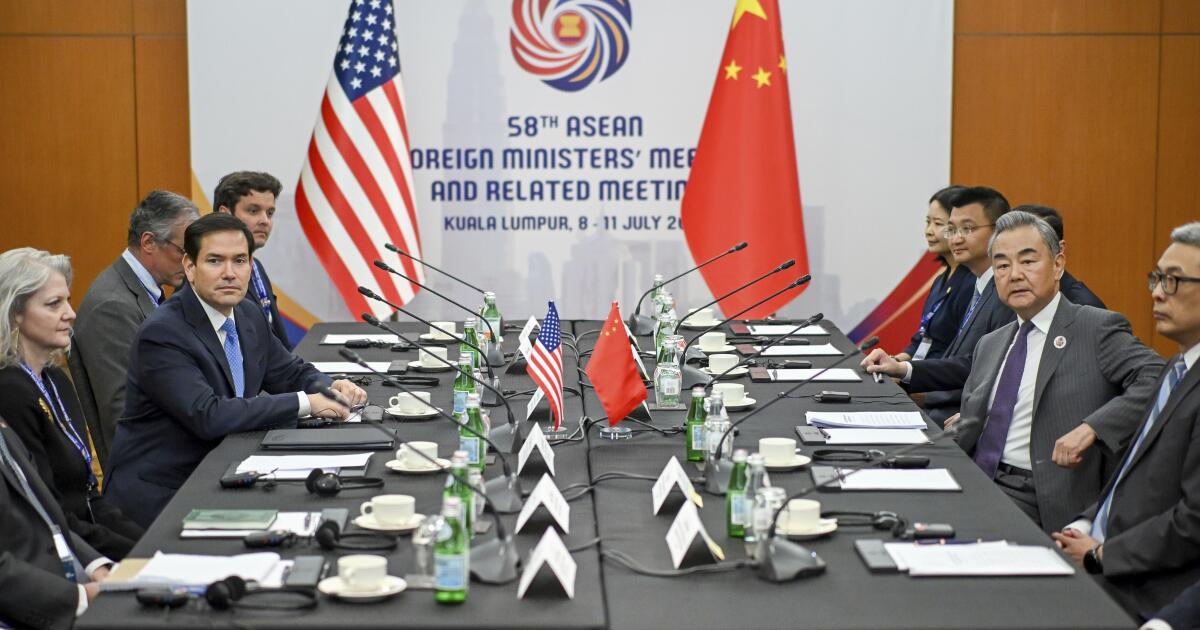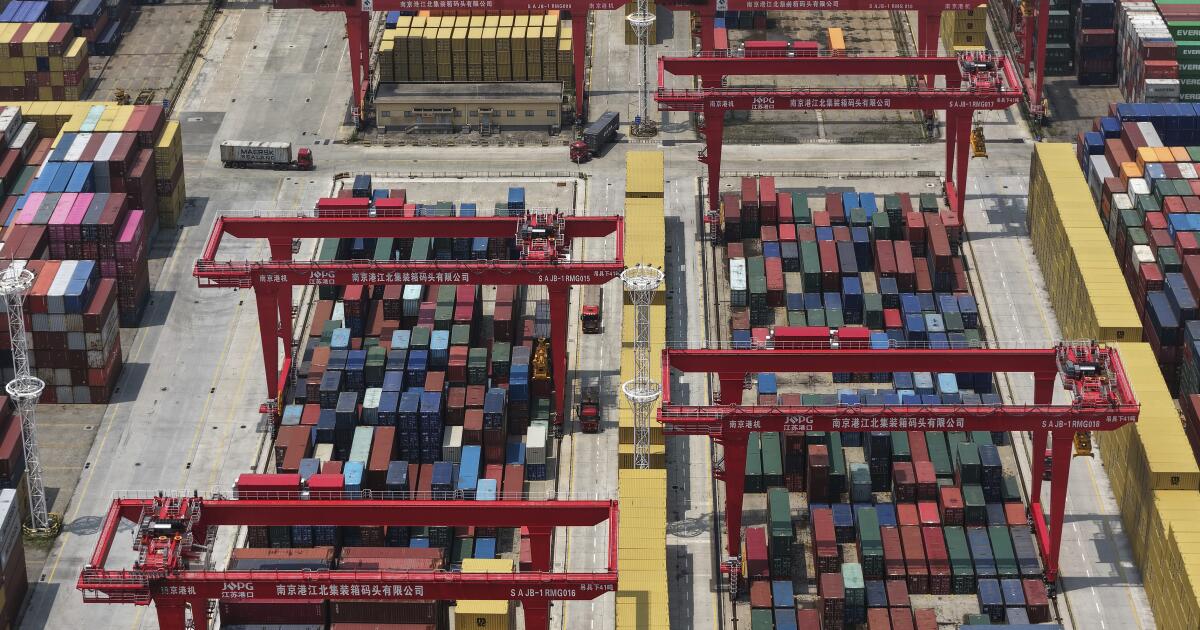Lessons from a Naval Arms Race: How the U.S.-China could Avoid the Anglo-German Trap
The U.S.-China competition is intensifying in the Indo-Pacific, especially in the maritime domain, and it is increasing the risk of a dangerous miscalculation. Both countries are rapidly building up their navies, reinforcing their deterrence posture, and heading for riskier military encounters. Yet while the buildup of hard power is accelerating, crisis management mechanisms are left shockingly underdeveloped.
Such dynamics remind one of the most unfortunate security failures in modern history: the pre-WWI Anglo-German naval race. Similarly, at the time, rising powers clashed at sea, backed by nationalist ambitions and rigid alliance systems, while mechanisms for de-escalation and maritime communication were nonexistent. Eventually, a fragile security environment was formed, prone to escalation from small events into a global conflagration.
Today, the U.S. and China are taking a similar path. If the United States does not urgently invest in an institutionalized crisis management mechanism alongside its defense modernization, it could lead to a strategic trap that is “ready to fight but unprepared for de-escalation.”
Risk of Escalation: Today’s U.S. and China
Like Germany’s pre-1914 maritime expansion under the Kaiser’s rule, China is attempting to modify the regional order by its naval power. In 2023, China’s PLA Navy commissioned at least two Type 055 destroyers and multiple Type 052D and Type 054A frigates, totaling more than 20 major naval platforms (including submarines and amphibious ships). Simultaneously, sea trials of Fujian, China’s third aircraft carrier—the most technologically advanced naval vessel in the fleet—have begun. In addition, coupled with A2/AD capabilities such as anti-ship ballistic missiles, including DF-21D and DF-26, such a military buildup can be considered a clear intent to complicate U.S. Navy operations in the Taiwan Strait and in the South China Sea.
The U.S. response was strong and swift. Under the context of the Pacific Deterrence Initiative (PDI), Washington has invested more than 27 billion USD since FY 2022 in forward basing, pre-positioning of munitions, and enhancing maritime operational resilience in the Indo-Pacific. In addition, the U.S. Navy is continuously investing in Columbia-class ballistic missile submarines, Virginia-class fast-attack submarines, and unmanned platforms. Strategic clarity is increasingly shaped by operational deterrence, and a greater number of U.S. naval platforms are now being forward deployed in contested waters.
Yet, just like before WWI, investment in military hardware is ahead of investment in crisis management systems. The gap between military capability and the mechanisms to manage conflicts is increasing, and such misalignment was what led the European countries to disaster in 1914.
Historical Parallels: The Anglo-German Trap
The Anglo-German naval race that occurred from the 1890s to 1914 reminds us of the current situation in the Indo-Pacific. Due to its industrial confidence, nationalist ambition, and strategic anxiety, Germany challenged the UK’s naval supremacy. In response, the UK reinforced its maritime dominance, built the revolutionary HMS Dreadnought, and eventually triggered a vicious cycle of competitive arms racing.
Despite the growing perception of risk, naval arms control was unsuccessful. The construction freeze proposed by the UK was refused by Berlin, and diplomatic overtures, including the 1912 Haldane Mission, collapsed due to distrust, lack of transparency, and domestic political pressures.
Effective crisis management did not exist. Maritime incidents that occurred in the North Sea and the Mediterranean were not arbitrated while diplomacy was intermittent and reactive. When the two sides tried to slow down the arms race, strategic distrust was deeply embedded. The assassination of Archduke Ferdinand transmogrified into a world war not because of one party’s aggression but because there was no off-ramp. Similar vulnerabilities exist in the Taiwan Strait and the South China Sea.
The Crisis Management Gap
Although some formal structures (military hotlines) exist between the U.S. and China, such instruments turn out to be continuously ineffective during crisis situations. During the 2023 Chinese balloon incident, Beijing did not respond to the U.S.’s urgent request for a hotline call. After Speaker Nancy Pelosi’s Taiwan visit in 2022, China suspended the senior defense dialogue.
Meanwhile, risky close encounters are increasing. For example, in June 2023, a Chinese J-16 fighter intercepted a U.S. RC-135 reconnaissance aircraft in a dangerous manner. In the same month, a Chinese destroyer violated navigation safety norms by crossing directly in front of USS Chung-Hoon in the Taiwan Strait.
These incidents are not individual events but systemic ones. And such events are occurring while there are no reliable institutionalized communication protocols between the two sides, where both are under a constant alert status.
To correct this, it is advisable for Washington to create a Joint Crisis Management Cell within INDOPACOM. This center should include liaison officers from the U.S., Japan, and Australia and be empowered to rapidly activate de-escalation protocols when a high-risk maritime incident occurs, even if high-level political channels are stagnant. This crisis management cell should utilize pre-negotiated crisis response templates—similar to an air traffic controller managing near-miss procedures—and guarantee the clarity and continuity of communication.
At the same time, the U.S. should embark upon a U.S.-China maritime deconfliction agreement, modeled upon the U.S.-Soviet INCSEA accord of the Cold War era. That accord, negotiated in 1972, defined maritime encounter procedures and communication protocols, and it proved durable even during the height of the Cold War. The modern version of INCSEA does not necessitate trust but is a functional necessity when heavily armed parties are operating at close range.
Strategic Effectiveness, Rather Than Symbolic Hardware
In the early 20th century, the UK’s naval expansion was not necessarily strategically consistent. Occasionally prestige overwhelmed operational planning, and doctrine lagged behind technological innovation. The U.S. should avoid falling into a similar trap.
Modern U.S. Navy planning should emphasize systems that actually provide effectiveness in a contested environment. In that sense, unmanned systems, including the MQ-9B SeaGuardian, long-range munitions like LRASM, and resilient RC2 structures are necessities. Such capabilities could enable U.S. forces to function even under missile saturation and communication denial situations.
Logistical innovation is also crucial. Forward bases situated in Guam, the Philippines, and Northern Australia should be diversified and strengthened to serve as maritime resupply nodes and distributed logistics hubs.
In addition, all these elements should be coordinated across domains. The U.S. Navy, Marine Corps, Air Force, Army, and allies’ coordinated integrated capacity would be sine qua non for effectively projecting power and managing military escalation.
Alliance Management and Entanglement
Although entangled alliances did not trigger WWI, they did contribute to its rapid escalation. The risk lay not only in misjudgment but also in the absence of a common structure that could manage shocks within complexly interconnected treaty systems.
The U.S. faces a similar risk. While the U.S. is maintaining defense treaties with Japan, South Korea, the Philippines, Thailand, and Australia, it is deepening its alignment in the region with AUKUS and the Quad. But many of these arrangements lack joint crisis response protocols or clear role expectations concerning the Taiwan contingency or conflictual situations in the South China Sea.
To mitigate such inherent risk, Japan should proactively lead in creating a Strategic Escalation Forum by 2026. This forum would summon decision-makers of the U.S.’s key allies—Australia, India, and the ASEAN countries—and jointly plan crisis responses, define thresholds, and establish mechanisms that provide political signaling during escalation.
As for South Korea, it should clarify its stance of non-combat in a Taiwan contingency through declaratory policy. This would confirm that South Korea would not dispatch troops to the Taiwan Strait, yet it could include commitments of logistics support, cyber operations, and intelligence sharing. Such a stance would lessen Beijing’s misunderstanding and alleviate allies’ concerns while enabling Seoul to prevent itself from being entrapped by a high-intensity scenario.
At the same time, Washington should initiate scenario planning on how AUKUS and Quad partners could contribute to coordinated crisis management, not necessarily through combat roles but through measures including ISR, sanctions enforcement, and strategic signaling.
The Future Path: To Prevent Another 1914
U.S.-China naval competition will not disappear, at least in the foreseeable future. Yet Washington has a choice: it could escalate through inertia, or it could manage competition through strategy. It is important to construct more submarines and missiles, yet that alone is insufficient. The genuine risk lies in the absence of an institutionalized safety mechanism.
If Europe was engulfed in the 1914 war due to unmanaged arms races and rigid alliances, the Indo-Pacific could also face a similar fate. If leaders in Washington do not create a structure that could absorb shocks and prevent escalation, the Taiwan Strait, just like Sarajevo, could become a spark.
The historical lesson is to plan for great powers not to collide with one another, rather than leaving them to rush toward an inevitable collision.
Washington should act now—not after a collision, but before—by institutionalizing a de-escalation mechanism before the strategic environment becomes rigid. The window of opportunity for prevention is still open, but it is narrowing.


